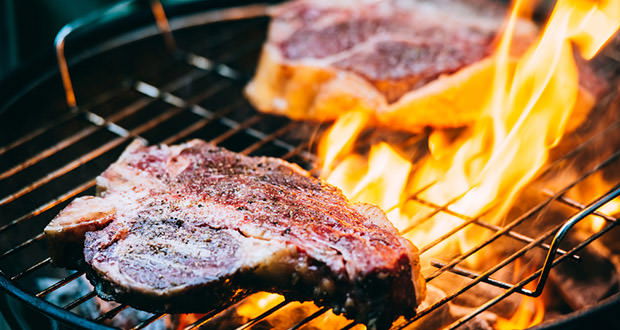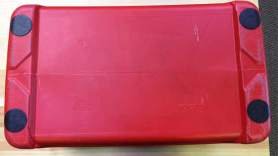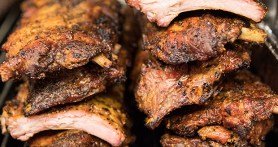

This post is part of our 50 Campfires series, 9 Rules for Flame-Cooking a World-Class Steak, giving you a complete guide to one of the best camping meals imaginable. A critical step in cooking the perfect steak is understanding temperature and when to pull a steak off the grill. With this is mind, below we provide a perfect steak temperature guide reference to ensure the perfect steak, every time.
Browse the list below to skip to a particular step:
Selecting a Steak
Preparing Steak
Seasoning
Fire, Fuel and Cooking Surface
Cooking Process
Cooking to Temp
Resting
Cutting and Slicing
Saucing and Sides
Perfectly Cooked Steak
The “perfect steak” is ultimately determined by the camper eating it. Only you know how done you want your steak – from blue rare to well done. Medium rare is widely recognized as the gold standard in perfectly cooked steak because it’s as far as you dare take a thinner cut, lower fat piece of meat via a quick cooking method without risk of it becoming dried out and tough to chew. To take the subjectivity out of levels of doneness, they are measured by temperature rather than appearance. For quick reference that’s:
- Rare – 125°F
- Medium Rare – 135°F
- Medium – 145°F
- Medium Well – 150°F
- Well Done – 155°F+
Stop Cooking
The key to achieving desired doneness is taking the steak off the heat 10 degrees BEFORE it reaches desired internal temperature. During the resting period the temperature will continue to rise to achieve your desired doneness.
Thickness Determines Time
If you’re using the traditional sear first method of cooking, steaks will generally require about a two minute sear to each side on high heat (500°F). Then the amount of time required in low heat (approx. 300°F) to bring to desired internal temperature will vary depending on the thickness of the steak. Steaks less than one inch thick may require nothing more than the sear alone.
Importance of Thermometer
Since the objective way to determine doneness is by temperature, a thermometer is essential to a precision cooking process. Most convenient is a remote reading thermometer. You simply insert the probe into the center of the thickest part of the steak, and you’ll be able to monitor its temperature rise degree by degree.
Using the Thermometer
Thermometers only work reliably on steaks at least 1½ inches thick or thicker. Insert the probe to the center of the thickest part of the steak. Make sure it doesn’t contact bone, gristle, or fat – just meat. The thermometer will start reading accurately in just a few seconds. Set the alarm on the receiving unit to alert you 10 degrees below the desired doneness temperature and remove the steak from the heat immediately and set aside to rest. Leave the thermometer inserted during the resting period.
Alternative Tests for Doneness
Lacking a thermometer or on a steak too thin for a thermometer to be accurate, there are other more subjective tests to use. There’s the hand test in which you touch your thumb to various other fingers on your hand to give a read of the “feel” of the steak. There’s also the face test providing a similar gauge based on touching different places on your face and comparing it to the resiliency of the cooked steak.









